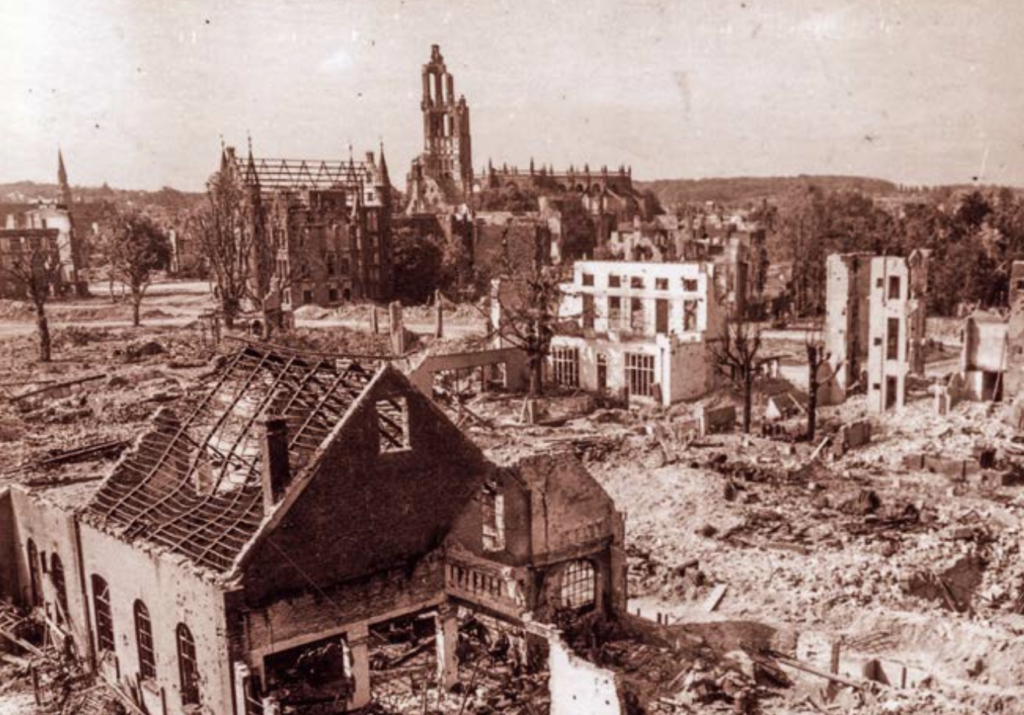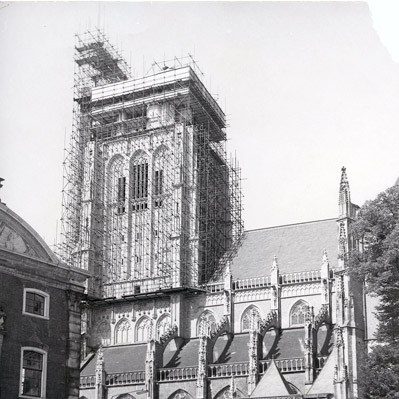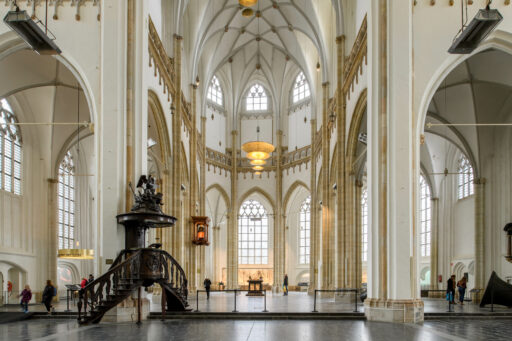
The first church in Arnhem
There was already a church in Arnhem in the ninth century. This is evident from the first document in which this church is mentioned, from 893, with the text Est in Arnheym ecclesia (There is a church in Arnhem). The history of the Eusebius Church therefore goes back twelve centuries!
The church that was described in 893 was dedicated to St Maarten and developed in several steps into a small Romanesque basilica. In the fourteenth century, this church was replaced by a new church, of which very little is known.
The construction of a new church in the late Gothic style began in 1452. At that time, visitors to the St Maartens church were declining due to competition from other churches in the city. So to give the church attendance an extra boost, a reliquary (the skull and tongue of St Eusebius) was brought from Prüm Abbey in Germany to Arnhem. In 1453, St Eusebius became the second patron saint of the church and later also gave his name to the ‘Great’ or Saint Eusebius Church.

Karel van Gelre
Karel van Gelre (Charles II, Duke of Guelders) (1467-1538) was one of the last feudal rulers of the Netherlands. He fought against the powerful emperor Charles V until his death. At the height of his power, Karel van Gelre ruled from the Wadden Sea until near Sittard. He also re-routed the Rhine to Arnhem, which turned the city into a prosperous center of power.
Karel van Gelre also emerges as the most important sponsor of the new Eusebius Church. He donates the Anna Chapel to the people of Arnhem and the residents honour him after his death with a tomb in the church. Six lions stand guard around the statue of the duke and his coat of arms representing Gelre, Kleve, Arckel, Bourbon, Burgundy, Berry and Bavaria.
Five years after the death of Karel van Gelre, Gelre was the last Dutch province to give up its struggle for freedom and was the last Dutch province to be added to the empire of Charles V.

The Battle of Arnhem
The Eusebius Church was at the center of the fighting during the Battle of Arnhem. On the night of 19 to 20 September 1944, the church was heavily shot at and almost completely burned out. To make matters worse, when the Rhine Bridge was blown up in 1945, half the tower broke loose and collapsed onto the battered nave of the church. If you see the photos of the ruins, you will understand that the current Eusebius Church has been largely rebuilt during a major period of restoration (1947-1964).

An icon of reconstruction
Jan Kalf, National Inspector for the protection of art and director of the National Office for the Protection of Monuments, came to the city soon after the liberation of Arnhem to view the destroyed monuments. He was quickly convinced that the Eusebius Church had to be rebuilt to give the city its icon back and the population their church. For this project, Kalf used architect Berend Boeyinga from Amsterdam.
After the reconstruction plans for the Eusebius Church had been published, the renowned architect Herman Baanders responded with a strong plea to preserve the church ruins as a war memorial as had happened with the Gedächtnichtskirche in Berlin. However, Kalf and Boeyinga stood firm. They believed that Arnhem and its people of Arnhem could not live without the rebuilt Eusebius Church.
